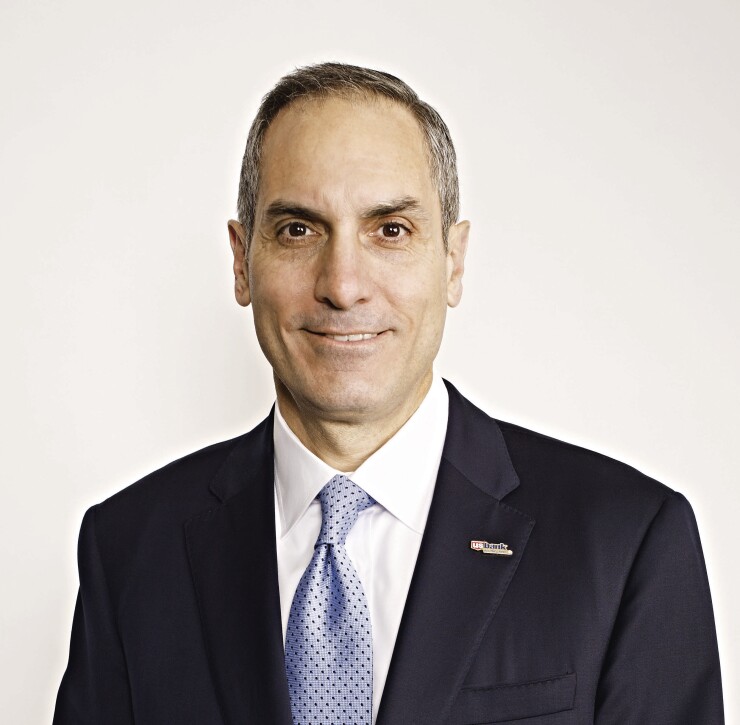Now that it’s been freed from a consent order tied to its anti-money-laundering compliance, U.S. Bancorp is accelerating plans to consolidate branches in existing markets and open new, smaller ones in cities where it has no retail presence.
Speaking on an earnings call Wednesday, Chairman and CEO Andy Cecere said that the 2015 enforcement order from the Office of the Comptroller of the Currency largely prevented the Minneapolis company from pursuing its long-term branching strategy because it was devoting “significant” resources toward improving its anti-money-laundering and Bank Secrecy Act compliance.
The $467.4 billion-asset company
U.S. Bank had been closing roughly 1% to 2% of its branches per year while it was under the OCC order, but Cecere said he expects net closings to increase over the course of the next few years.
Meanwhile, the bank is moving ahead with plans to add branches in

The push into new markets is partly a play to add more deposits to fund anticipated loan growth. Like many regional banks, U.S. Bank has struggled to increase retail deposits lately as many consumers migrated to online-only banks that pay higher rates or to larger banks — particularly JPMorgan Chase and Bank of America — that have heftier marketing budgets and greater visibility and that are themselves expanding into new markets.
Indeed, loan growth at U.S. Bancorp outpaced deposit growth in 2018, and if the trend continues, U.S. Bank may need to tap the capital markets or other sources to meet an anticipated increase in loan demand, company executives said Wednesday. That's a reversal from 2017, when deposits increased 6.6% year over year, while loans climbed 3.3%.
In the fourth quarter, loans climbed 1.4% from the same period a year earlier, to $283.7 billion. Commercial loans increased 3% to $100.5 billion, credit cards climbed 5.6% to $22.4 billion, and residential mortgages increased 8% to $64.5 billion. That growth was partly offset by declines in commercial real estate, second mortgages and home equity loans.
By contrast, average deposits fell 1.4% to $334.4 billion, driven by declines in non-interest-bearing deposits and money market accounts.
Overall, the company posted a fourth-quarter profit of $1.9 billion. Earnings per share were 4 cents higher than the mean estimate of analysts polled by FactSet Research Systems at $1.10.
Chief Financial Officer Terry Dolan said that recent investments in digital capabilities have helped to drive some of the loan growth it reported in the fourth quarter.
He said that the bank has cut down the amount of time it takes to approve small-business loans, from weeks to a matter of one or two days. Where it once asked small-business borrowers for around 120 pieces of information, it now asks those customers just a dozen or so questions, relying on other sources for that information.
He also said that investments in its mortgage lending platform have paid off.
“We rolled out digital capabilities in the mortgage space two years ago,” Dolan said. “Today, 71% of all mortgage applications come in through the digital channel.”
John Mackerey, an analyst with DBRS, said U.S. Bank has “a number of levers” it can pull as it looks to add deposits to keep pace with loan demand.
“They’re highly diversified, not just in business lines, but also geographically, so I think that gives them a lot of flexibility for deposit growth,” he said.





